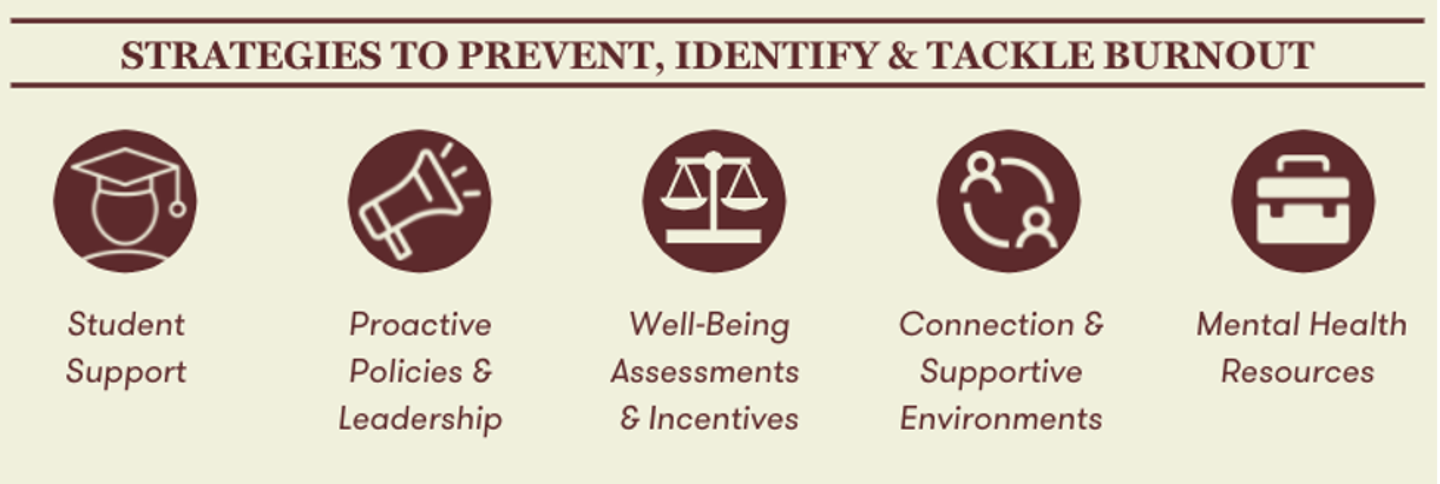Pharmacy burnout during COVID-19
It has been over a year since COVID-19 was officially declared a pandemic. With the implementation of stay-at-home orders since early 2020, many health clinics transitioned to providing remote care. During these challenging times, pharmacies across Canada kept their doors open, reinforcing their role as a vital health hub and source of support for their communities. While the pandemic has again put a spotlight on the pharmacist’s role as the most accessible health care professional, the changes in the landscape of pharmacy have been physically and emotionally impactful for pharmacy teams and have contributed to significant burnout.
What is burnout?
The World Health Organization defines burnout as a “syndrome conceptualized as resulting from chronic workplace stress that has not been successfully managed.”1 There are three components to burnout: feelings of energy depletion or exhaustion; increased mental distance from one’s job, or feelings of negativism or cynicism related to one’s job; and reduced professional efficacy.1
How is burnout affecting pharmacists?
Unfortunately, burnout is nothing new to pharmacy. Pre-pandemic surveys in the United States demonstrated that hospital pharmacists experience one of the highest rates of burnout among health care professionals, at 61.2%.2 This rate was higher than that of surgeons, oncologists, and emergency-medicine practitioners included in the survey.2 Among community pharmacists, another study found a burnout rate of 74.9%.3
Although contributors of chronic stress and burnout can vary between individuals, common factors in pharmacies include working overtime, performance metrics, lack of control, medication supply shortage, and patient incivility.4 In general, pharmacists working in corporate chains are more likely to experience burnout, as independent pharmacies tend to have more control over workload and staffing. Regardless of the setting, COVID-19 has only exacerbated the amount of stress that pharmacy teams are facing, bringing forth additional hurdles including frequent changes in practice, strained resources, and further increases in workload, not to mention personal health and psychosocial challenges related to the pandemic. A national survey conducted in December 2020 demonstrated that pharmacists from various settings reported higher mean burnout scores compared to pre-pandemic.4 This survey was completed prior to COVID-19 vaccine clinics, which have brought additional clinical and logistical pressures to pharmacy teams.
Pharmacist burnout not only impacts the mental and physical wellbeing of pharmacists, but their patients as well. The exhaustion, cynicism, and reduced professional efficacy that characterize burnout can ultimately result in less time spent with each patient, more medication errors, and negative impacts on patient safety and satisfaction.5,6 In order to reduce these negative and potentially long-term repercussions, it is important to provide supports and interventions for pharmacists to proactively prevent and manage burnout.
What can pharmacists do to prevent or manage burnout?
To effectively combat burnout, strategies and interventions need to be made on both the individual and systemic level. Below, we discuss potential strategies that may be considered to prevent and address burnout, and how they might be implemented in practice.
Start at the foundation
Students in healthcare often face burnout. It has been shown that chronic academic stress can lead to burnout in PharmD students, which impacts mental wellbeing, self-confidence, learning, and academic performance.7 Burnout in healthcare students may also result in deleterious coping strategies including changes in academic/professional integrity and substance use.8,9 Curriculum and assessments for students may adapt by promoting an environment that prioritizes learning over rote memorization for the purpose of achieving a higher numeric grade.6,7,10 An example of how this could be achieved involves switching to a pass/fail grading system, which has been shown to improve student well-being without significant impacts on academic outcomes.6,10 Wellness programs that promote healthy habits for students can also be implemented and mental health supports should be readily accessible on campus.6 Teaching students the tools and habits to check in with themselves and their peers, and safe/productive coping strategies when they recognize burnout will better prepare students as they set out on their careers in healthcare.
Practise proactive leadership
Leadership figures must acknowledge that burnout exists and recognize their role in effectively reducing burnout amongst their employees.11 Changes on the systemic level are able to address the most significant causes of burnout. Assessing workload and engaging your team in discussions on how to make processes more efficient will empower them and make them feel heard.11 When possible, implement programs or technology to streamline workflow (e.g., booking tools, clinical service management software, medication synchronization programs), and utilize the full scope of practice of team members such as pharmacy students/interns and registered pharmacy technicians, who are able to inject vaccines in certain provincial jurisdictions. Further, leadership should identify the unique talents and motivators of each team member; it has been proven that when individuals spend at least 20% of work time on something that they find most fulfilling (such as patient care, administrative work, research, or mentoring), their chances of burnout are significantly lowered.11
Managers can also take care not to delegate additional tasks to overstretched members of the team. This has been a challenge for many pharmacies facing unpredictable supply of COVID-19 vaccines, often requiring last minute scheduling. Recent prolongations in the stability of the vaccines have allowed more time for planning and eased some of the pressure, however many pharmacy teams continue to face a lack of control and imbalance in vaccine supply and demand. Some pharmacists have found scheduling a reasonable number of appointments once vaccine is on hand and only doing what their team has capacity for each day (while keeping a standby list) to be helpful strategies in taking back some control of the workflow. Continued work in advocacy is also important for the profession as limited resources and remuneration are significant contributors to burnout.
Include well-being assessments & incentives
Implementing incentives that promote well-being rather than strictly performance can help to prevent healthcare providers from overworking and providing less-than-optimal patient care.11 Outside of increased compensation, options for incentives include greater schedule flexibility, more time allocated to personally meaningful aspects of work, or time off.11
Employee well-being should also be routinely included in performance assessments.11 Some standardized instruments to assess well-being include the Well-Being Index, Empowerment at Work Scale, Maslach Burnout Inventory, and Perceived Stress Scale.11
Foster a supportive work environment & connection
A supportive work environment can go a long way in improving work relations and reducing potential for burnout. In one study, physicians experienced significant reductions in depersonalization and emotional exhaustion when they engaged in 1 hour of small group discussion every other week related to medicine or the challenges of being a physician.11 In addition, having lounge rooms or gathering areas in the workplace can help foster interpersonal connections amongst pharmacy members.11
Events that promote sharing and interaction can also help build connection. Earlier this year, Wholehealth ran a virtual conference for banner teams and pharmacy students that focused on building resilience, mindfulness, and self care. Resilience is the ability to overcome adverse situations or conditions; fostering resilience in pharmacy teams is an essential element in the toolbelt when tackling burnout. Conference participants heard first-hand stories of resilience from panel speakers with lived experience and had the opportunity to share and explore self-care strategies in small groups. Conference packages featured products from BIPOC-owned small businesses, supporting connection within the community.
Provide mental health and self-care resources
Although COVID-19 has impacted mental health in the general population, health care professionals have been the most affected. In addition to the systemic considerations above, equipping pharmacists with the resources to take care of their mental health can help manage burnout on an individual level. The Mental Health Commission of Canada offers virtual mental health training courses for both managers and employees. The Centre for Addiction and Mental Health (CAMH) has assembled resources for health care workers during COVID-19 including self-care tools, self-referral forms for psychotherapy, and professional support groups. They also host weekly discussion sessions on various mental health topics for health professionals during the pandemic. Organizations may also develop programs to support mental health; Wholehealth runs an annual #Here4MentalHealth Campaign, providing resources, training, and awareness tools to reduce stigma and promote a safe space in the pharmacy for staff and all members of the community. In larger organizations, providing benefits such as exercise programs, wellness coaching programs, mindfulness sessions, discounted gym memberships, and coverage for counselling appointments will encourage employees to engage in self-care practices and seek professional help without the financial barrier.11
The pandemic has forced health care systems to make significant adjustments in their operations, demonstrating their ability to adapt when needed. As we emerge from this pandemic, additional research is needed to characterize burnout and its long-term impact on pharmacists & team members. Pharmacy teams have been essential during this time, continually protecting their communities and adapting to growing responsibilities and expectations, all too commonly at the expense of their own mental health and wellness. The time to implement strategies to reduce burnout amongst pharmacists is long overdue. As healthcare professionals, protecting and maintaining our physical and mental health is essential, and in turn, taking care of ourselves will allow us to better help our patients.
References
- Burn-out an “occupational phenomenon”: International Classification of Diseases. World Health Organization. Published May 28, 2019. Accessed June 15, 2021. https://www.who.int/news/item/28-05-2019-burn-out-an-occupational-phenomenon-international-classification-of-diseases
- Jones GM, Roe NA, Louden L, Tubbs CR. Factors associated with burnout among US hospital clinical pharmacy practitioners: Results of a nationwide pilot survey. Hosp Pharm. 2017;52(11):742-751. doi: 10.1177/0018578717732339
- Patel SK, Kelm MJ, Bush PW, Lee HJ, Ball AM. Prevalence and risk factors of burnout in community pharmacists. J Am Pharm Assoc. 2021;61(2):145-150. doi: 10.1016/j.japh.2020.09.022
- Johnston K, O’Reilly CL, Scholz B, Georgousopoulou EN, Mitchell I. Burnout and the challenges facing pharmacists during COVID-19: results of a national survey. Int J Clin Pharm. 2021:1-10. doi: 10.1007/s11096-021-01268-5
- Panagioti M, Geraghty K, Johnson J, et al. Association between physician burnout and patient safety, professionalism, and patient satisfaction. JAMA Intern Med. 2018;178(10):1317-1331. doi: 10.1001/jamainternmed.2018.3713
- Reith TP. Burnout in United States healthcare professionals: A narrative review. Cureus. 2018;10(12):1-6. doi: 10.7759/cureus.3681
- Kaur M, Long JW, Luk FS, Mar J, Nguyen DL, Ouabo T, Singh J, Wu B, Rajagopalan V, Schulte M, Doroudgar S. Relationship of Burnout and Engagement to Pharmacy Students’ Perception of Their Academic Ability. American journal of pharmaceutical education. 2020;84(2). doi: 10.5688/ajpe7571
- Jackson ER, Shanafelt TD, Hasan O, Satele DV, Dyrbye LN. Burnout and alcohol abuse/dependence among US medical students. Academic Medicine. 2016 Sep 1;91(9):1251-6. doi: 10.1097/ACM.0000000000001138
- Dyrbye LN, Massie FS, Eacker A, Harper W, Power D, Durning SJ, Thomas MR, Moutier C, Satele D, Sloan J, Shanafelt TD. Relationship between burnout and professional conduct and attitudes among US medical students. Jama. 2010;304(11):1173-80. doi: 10.1001/jama.2010.1318
- Reed DA, Shanafelt TD, Satele DW, Power DV, Eacker A, Harper W, Moutier C, Durning S, Massie Jr FS, Thomas MR, Sloan JA. Relationship of pass/fail grading and curriculum structure with well-being among preclinical medical students: a multi-institutional study. Academic Medicine. 2011;86(11):1367-73. doi: 10.1097/ACM.0b013e3182305d81
- Shanafelt TD, Noseworthy JH. Executive leadership and physician well-being: Nine organizational strategies to promote engagement and reduce burnout. Mayo Clin Proc. 2017;92(1):129-146. doi: 10.1016/j.mayocp.2016.10.004


